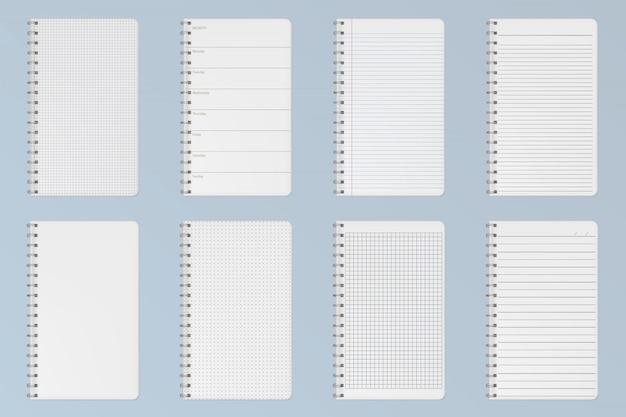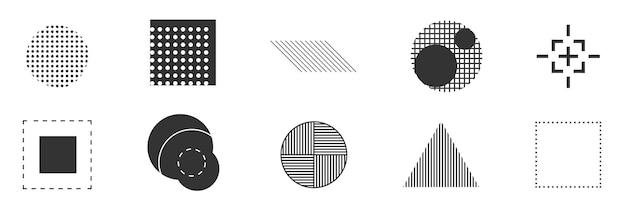Lines are one of the fundamental elements in art, mathematics, and technical drawing. They are not only aesthetically pleasing but also serve various purposes in different disciplines. Whether you’re a student learning about lines in math class or an artist exploring different types of lines for your artwork, it’s essential to have a good understanding of the various types of lines that exist.
In this blog post, we will dive into the world of lines and discuss the ten types of lines you should know in 2023. We’ll explore their definitions, characteristics, and provide practical examples to enhance your understanding. So, whether you’re curious about the different types of lines in mathematics, technical drawing, or art, this comprehensive guide will have you covered. Let’s get started!

The 10 Types of Lines: Exploring the Wonders of Geometry
Geometry, the field of mathematics that deals with shapes, angles, and lines, may sound intimidating to some. But fear not! In this article, we’re going to dive into the fascinating world of lines. You’ll discover that lines are not just boring strokes on a page; they come in various forms and serve different purposes. So, let’s untangle the mystery and explore the ten types of lines that make geometry so captivating.
1. Horizontal Lines: The Zen of Straightness
Imagine a perfectly level surface, as smooth as an ice rink. That’s exactly what a horizontal line represents – a straight path that runs parallel to the horizon. These lines give us a sense of stability, like a calm sea stretching endlessly into the distance. They’re like the tranquilizers of geometry, always keeping things balanced.
2. Vertical Lines: Rising to New Heights
Unlike horizontal lines, vertical lines stand tall and proud, defying gravity. They shoot straight up, piercing through the sky, and create a sense of height and growth. Think of skyscrapers or towering trees – they too embody the essence of vertical lines. So, next time you want to feel uplifted, look up and embrace the power of the vertical!
3. Diagonal Lines: Adding Some Excitement
If horizontal lines are calm and vertical lines are ambitious, diagonal lines bring a touch of adventure to the mix. They travel at a slant, challenging the norms with their dynamic nature. Diagonal lines make us think of movement, speed, and a hint of thrill. They’re like the daredevils of geometry, zigzagging their way through the world.
4. Perpendicular Lines: Where Paths Cross
Imagine two friends walking towards each other, their paths intertwining at a right angle. That’s what perpendicular lines are all about – intersecting at 90 degrees. They’re like the intersections of fate, creating opportunities for new connections and relationships. Perpendicular lines are the architects’ secret weapon, allowing them to shape the world with precision.
5. Parallel Lines: Forever Side by Side
Parallel lines, like true companions, never depart from each other’s side. They run in the same direction but never meet, no matter how far they travel. Such unbreakable bonds evoke a sense of unity, trust, and companionship. When you see a set of railroad tracks stretching into the distance, you’re witnessing the magic of parallel lines.
6. Curved Lines: Embracing the Beauty of Flexibility
While straight lines dominate the geometric world, there’s something enchanting about the elegance of curves. Whether it’s the graceful arc of a rainbow or the mesmerizing swirls of a seashell, curved lines bring fluidity and harmony to our visual experience. They remind us that life isn’t always a rigid path but can have gentle, free-flowing moments.
7. Zigzag Lines: The Roller Coasters of Geometry
Hold on tight! Zigzag lines take us on a thrilling ride, resembling the ups and downs of a roller coaster. They’re full of energy, intensity, and sudden changes in direction. Think of lightning bolts cutting through the sky or the jagged edges of a bold thunderstorm. Zigzag lines infuse geometry with an element of surprise that keeps us on our toes.
8. Dashed and Dotted Lines: The Teases of the Geometric World
Have you ever seen dashed or dotted lines on a road, guiding you on a new route? These lines serve as playful hints, signaling what’s to come. Dashes create a feeling of urgency and momentum, while dots provide a sense of rhythm and anticipation. They leave room for imagination, enticing us to fill in the gaps and uncover the hidden beauty.
9. Curvilinear Lines: Breaking Free from Straitjackets
Geometry isn’t always about straight lines and right angles. Curvilinear lines rebel against the conventional constraints, bending and twisting with grace. They give us the freedom to explore organic shapes, like meandering rivers or the curvy contours of our bodies. Curvilinear lines celebrate the uniqueness of nature, reminding us that perfection often lies in imperfection.
10. Segment and Ray Lines: Dividing and Extending Infinity
Segments and rays are like siblings in the geometric world, born from the same origins but heading in different directions. A segment connects two points, creating a defined length in between. On the other hand, a ray begins at a single point and extends infinitely in one direction. Together, they symbolize the limitless possibilities that mathematics offers.
Lines may seem simple at first glance, but as we’ve seen, they hold the keys to a fascinating world of shapes and connections. From the tranquility of horizontal lines to the thrilling zigzags and curvilinear freedom, each type of line brings its own magic to geometry. So, the next time you encounter a line, take a moment to appreciate its unique character and the wonders it unveils in the world of mathematics. Embrace the lines, embrace the beauty of geometry!

FAQ: What are the 10 Types of Lines?
Welcome to our comprehensive FAQ-style guide on the different types of lines! Whether you’re a math enthusiast or an art lover, understanding the various types of lines is essential. In this article, we’ll explore the 10 different types of lines, providing examples and explanations along the way. So let’s dive right in!
What are the Examples of Line
Lines are everywhere around us, and they come in various forms. Here are three examples of common lines you might encounter:
-
Straight Line – A straight line is the most basic type of line, represented by a series of points extending infinitely in both directions. Think of a perfectly aligned row of trees stretching across a field.
-
Curved Line – Unlike straight lines, curved lines have a gentle or dramatic curve to them. Imagine the elegant arch of a rainbow or the meandering path of a river.
-
Zigzag Line – Zigzag lines feature a series of sharp angles and straight segments alternating rapidly. Picture the jagged bolt of lightning that zips across the sky during a thunderstorm.
What are Lines in Math
In the realm of mathematics, lines play a significant role. They are represented by continuous and infinitely extending straight strokes. Here are a few common types of lines used in math:
-
Horizontal Line – A horizontal line runs parallel to the horizon and has a slope of zero. It remains at the same height at every point. Think of the vast expanse of the sea meeting the sky at the horizon.
-
Vertical Line – A vertical line runs perpendicular to the horizon and has an undefined slope. It goes straight up and down without any change in the x-coordinate value. Imagine a towering skyscraper reaching for the clouds.
-
Diagonal Line – A diagonal line connects two nonadjacent corners of a shape. It can slant upward or downward, depending on its direction. Picture the diagonal stripes on a zebra or the slope of a hill.
What are the Different Types of Lines and Shapes
Lines and shapes go hand in hand, creating intricate patterns and structures. When it comes to lines, they define the boundaries and outlines of shapes. Here are a few common types of lines that create various shapes:
-
Closed Line – A closed line forms a complete loop, with both ends meeting. It outlines closed shapes like circles, squares, triangles, or any other shape with no gaps. Think of a perfectly round donut or a square piece of jewelry.
-
Open Line – An open line does not connect back to itself, leaving the ends unjoined. It can create shapes like arcs, spirals, or any figure with a starting and ending point. Imagine a winding path through a garden or the swirls of a seashell.
-
Parallel Line – Parallel lines are two or more lines that remain equidistant from each other and never meet. They run side by side, similar to railroad tracks that never converge.
What are the 7 Types of Lines in Technical Drawing
In technical drawing, lines play a crucial role in communicating and representing objects accurately. Here are seven types of lines commonly used in technical drawings:
-
Construction Line – Construction lines are lightly drawn lines used as guides to help create accurate shapes and proportions. They provide a framework for the final drawing and are often later erased.
-
Center Line – A center line divides an object or shape into equal halves. It helps indicate the center point and assists in symmetrical drawing. Center lines are often used for circular or cylindrical objects.
-
Hidden Line – A hidden line represents an edge or line that is not visible in the final object. It helps to clarify the shapes and structures that are occluded or obscured from view.
-
Dimension Line – Dimension lines indicate the measurements or dimensions of an object. They typically feature arrowheads at both ends and numerals or letters to specify the distance.
-
Cutting Plane Line – Cutting plane lines indicate where an object is cut to reveal its internal features. They help in showing cross-sectional views of objects in technical drawings.
-
Section Line – Section lines are used to represent the material that has been cut through in a cross-sectional view. They help distinguish between different materials or components.
-
Object Line – Object lines are the main outlines and visible edges of an object in a technical drawing. They define the shape, size, and contours of the object being represented.
Lines are not just simple strokes but rather dynamic elements that shape our world. Whether they are straight, curved, or zigzag, lines serve various purposes in math, art, and technical drawings. By understanding the different types of lines, we gain a deeper appreciation for the intricate patterns and structures around us.
So, the next time you encounter a straight line stretching across the horizon or a graceful curve adorning a piece of artwork, take a moment to appreciate the beauty and significance of lines in our lives. Happy exploring!
Remember to stay tuned for more interesting topics as we continue our journey through the fascinating world around us.